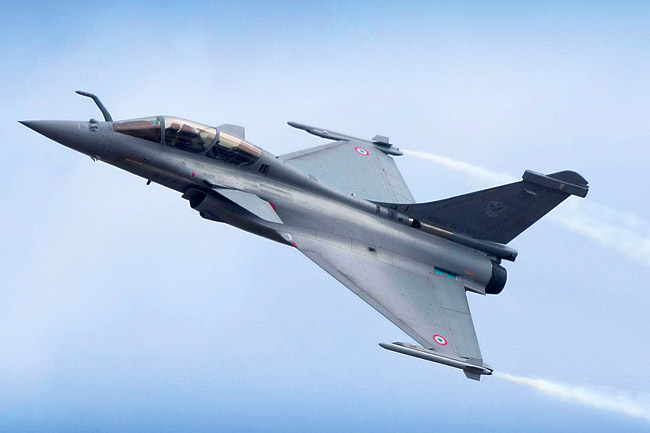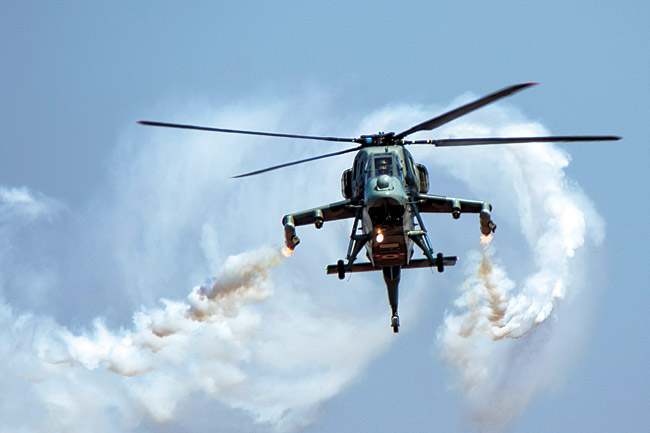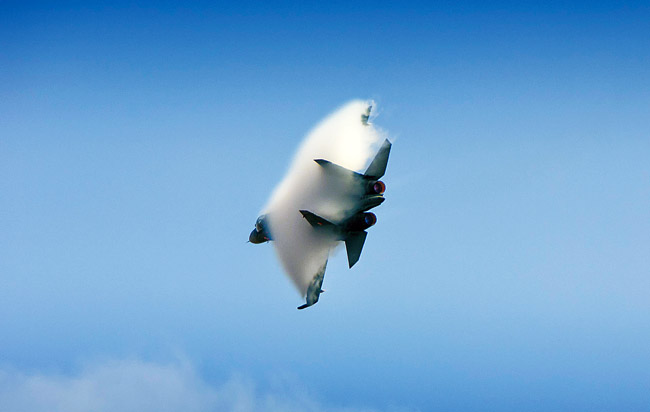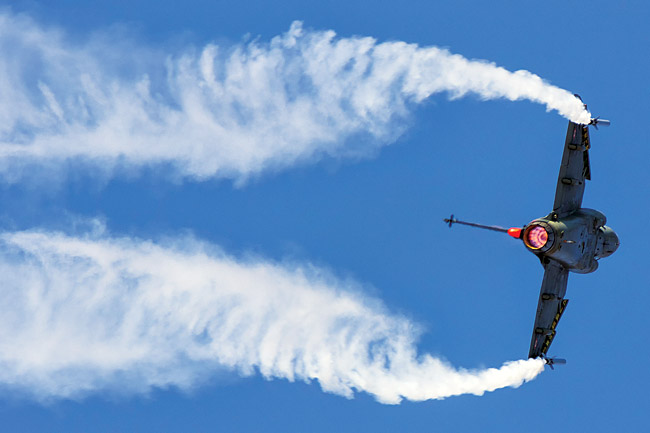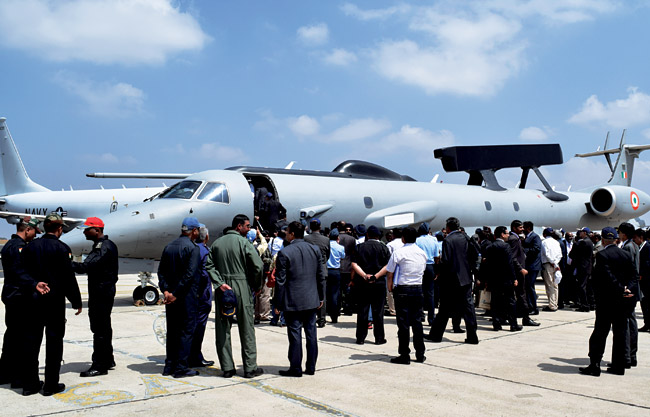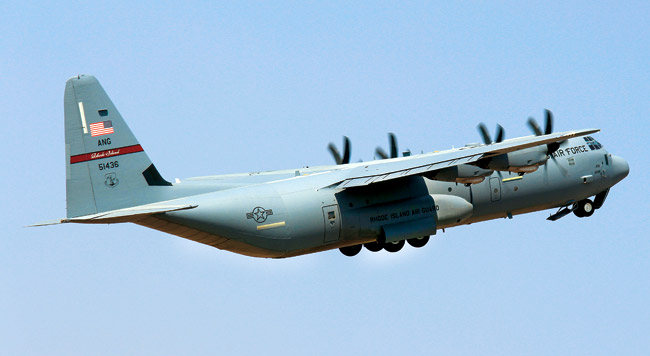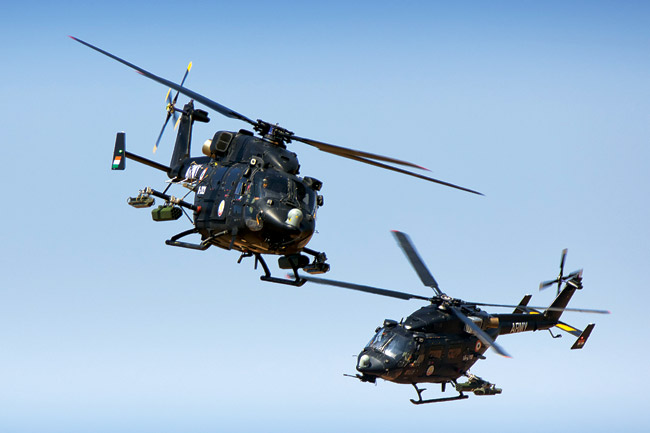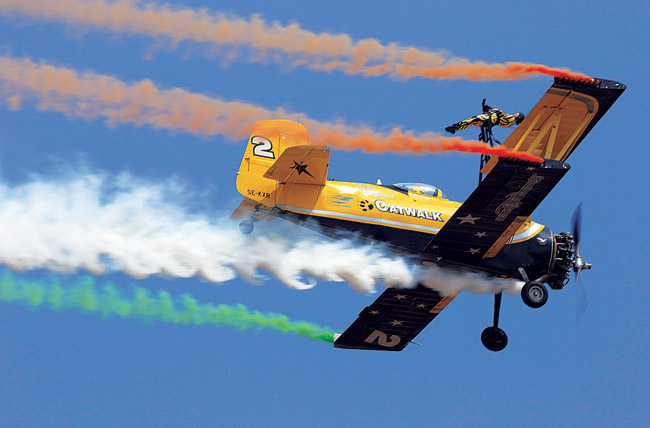INDIAN ARMED FORCES CHIEFS ON
OUR RELENTLESS AND FOCUSED PUBLISHING EFFORTS

SP Guide Publications puts forth a well compiled articulation of issues, pursuits and accomplishments of the Indian Army, over the years

I am confident that SP Guide Publications would continue to inform, inspire and influence.

My compliments to SP Guide Publications for informative and credible reportage on contemporary aerospace issues over the past six decades.
- Prime Minister witnesses 'Bharat Shakti' – a Tri-Services Firing and Manoeuvre Exercise in Pokhran, Rajasthan
- Interim Defence Budget 2024-25 — An Analysis
- Union Defence budget 2024
- Prime Minister Modi Commemorates Indian Navy Day in a Grand Ceremony
- Prime Minister Modi Flies in the LCA Tejas
- New Chapter in India-Italy Defence Ties
- Airpower beyond Boundaries
Aero India makes a mark
With over 1,000 civil aircraft on order, about 400 fighter aircraft and 800 helicopters requirement, besides 5,000 helicopter engines in the next five to 10 years, the aerospace and defence sector is going to boom like never before and the two sectors coming together is but natural
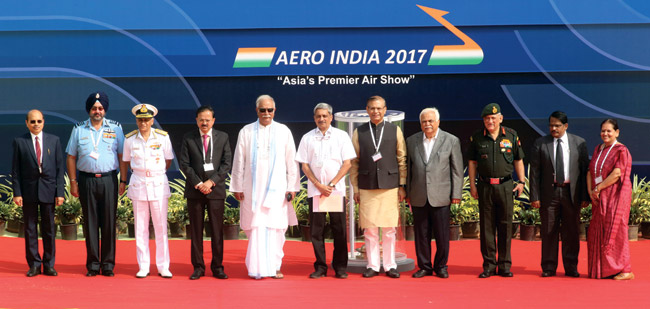
The Defence Minister Manohar Parrikar inaugurated the 11th biennial edition of Aero India 2017 at Air Force Station Yelahanka in Bengaluru on February 14. This edition of Aero India, for the first time, combined the defence and civil aviation segments into a holistic event with the involvement of the defence and civil aviation ministries. It is likely that the two biennial events — Aero India which is held in Bengaluru and India Aviation that is held in Hyderabad — will become one, though it has not been officially announced yet.
Parrikar said that this edition of Aero India would witness the emerging dynamism of defence manufacturing in India, especially the rising role of Indian defence industry. He further stated that the government is committed to creating an enabling environment for a domestic ecosystem of defence manufacturing, the results of which were already visible. He added, “The defence public sector undertakings are being revitalised and encouraged. Government has also taken several initiatives for ease of doing business for private firms and additional initiatives are underway to support the role of private sector in defence manufacturing.”
Stating that the government was going aggressive on various initiatives that would prop up the economy, including ‘Make in India’, ‘Start-up India’, the Defence Minister said that the focus had shifted to start-ups, while the government will not compromise on timebound delivery of projects, to ensure that the armed forces modernisation was always on track.
“The government will encourage manufacturing, design as well as innovation in the field of defence manufacturing. Conditions have never been better than now for defence manufacturing in India and I hope it will make way for better technical enhancement,” he said. There would be constant efforts to engage the foreign original equipment manufactures (OEMs), who he acknowledged had contributed significantly to enhancing India’s aerospace and defence capabilities. The government, he said, was taking measures to ensure that ease of business would improve to enhance investments, not only domestic but also international, in these sectors.
The Minister for Civil Aviation P. Ashok Gajapathi Raju highlighted that India was the fastest growing aviation sector in passenger terms in the world and held tremendous potential to graduate from the present position of being ninth in the world to being the third largest by 2022.
The inaugural address was followed by three Mi-17 helicopters flying past the dais in formation carrying the flags of India, the Indian Air Force (IAF) and Aero India. This edition of Aero India had to its credit the first ever public display of light utility helicopter (LUH) and the handing over by the Defence Research and Development Organisation (DRDO) of the first indigenous airborne early warning and control (AEW&C) aircraft, the Embraer ERJ-145, in the initial operational clearance configuration to the IAF.
The air show that followed had a fly-past by the ‘Make in India’ formation consisting of HTT-40, Hawk-i, Dornier 228, Su-30MKI and the Tejas light combat aircraft. This was followed by the fighters tearing through the skies displaying a host of aerobatic manoeuvres — the Su-30MKI followed by Sweden’s Saab Gripen, Tejas LCA, the American F-16 Falcon and the French Rafale. The Yakovlev aerobatic team, the Skycats, the Surya Kiran aerobatics team and the Sarang helicopter display team enthralled the spectators with their performance. Another unique feature of this air show was the 20-minute sortie by the Chief of the Air Staff, Air Chief Marshal Birender Singh Dhanoa, who flew in the Tejas LCA trainer during the day.
“The government will encourage manufacturing, design as well as innovation in the field of defence manufacturing. Conditions have never been better than now for defence manufacturing in India and I hope it will make way for better technical enhancement.”
— Defence Minister Manohar Parrikar
Present on the occasion were the Minister of State for Defence, Dr Subhash Ramrao Bhamre; the Minister of State for Civil Aviation Jayant Sinha, the three Service Chiefs of the Army, Navy and the Air Force, and the Industries Minister of Karnataka R.V. Deshpande; Secretary Defence Production, Ashok Kumar Gupta; delegates from several foreign countries, senior serving officers from the three Services, veterans, and senior executives from defence industries.
In his welcome address Ashok Kumar Gupta, Secretary Defence Production, said that Aero India had carved a niche for itself globally as a premier aerospace exhibition. The interest by the OEMs had increased as the government had come out with policies that were conducive for joint investments.
After inaugurating the show, the Defence Minister spent time understanding the capabilities of India’s first indigenously developed AEW&C system. He also went inside the Netra AEW&C system, developed by the DRDO and the Hindustan Aeronautics Limited (HAL), and other stalls.
Industrialists Anil Ambani flew on a Rafale fighter jet at the air show and pulled off 6G (experiencing six times the force of gravity) during his 35-minute sortie. Dassault Aviation, the manufacturer of Rafale, has forged a joint venture with Ambani’s Reliance Defence for carrying out its offset obligations bundled with the Rafale deal. Asked to sum up his fighter flight experience, Ambani said it was fascinating and he wanted to fly many more times.
Secretary Defence Production Gupta was spotted at the BAE Systems stand, getting a lowdown on modular bridging systems. He discussed the utility of such systems that can be deployed quickly to replace infrastructure in combat and for peacetime disaster relief. The systems can be used for building bridges in lengths up to 60 metres that can support main battle tanks and 110-tonne loaded tank transporters.
At a joint press conference, the two ministers talked about convergence of aerospace and defence. With over 1,000 civil aircraft on order, about 400 fighter aircraft and 800 helicopters requirement, besides 5,000 helicopter engines in the next five to 10 years, the aerospace and defence sector is going to boom like never before and the two sectors coming together is but natural, said Parrikar.
He said while indigenisation would be the route, there would be substantial content from the foreign OEMs as “we do not have those technologies.” The percentage of indigenisation content can keep increasing as we progress. He was all praise for HAL which has kept to timelines and the aerospace major would be outsourcing work in large quantities, thus galvanising the emerging private sector. “We are ramping up LCA production and we would be adding another line of eight, from the present eight production lines.” During the current calendar year, there would be decisions on C295, single- and twin-engine fighter, etc.
Echoing similar views, Ashok Gajapathi Raju said considering aviation growth, currently over 20 per cent, and with more aircraft coming in and the Regional Connectivity Scheme all set to take off, there would be urgent need to infuse a lot more investment from within and without. “We are growing at a pace where we will need to invite investments from everywhere.” India is expected to catapult from its ranking of nine in global aviation market to number three by 2022.
The Minister of Civil Aviation said with aviation growth at over 20 per cent, there was going to be strain on infrastructure. “We are going to add another 55 airports to the already 75 operational airports in the next two years. The Airports Authority of India requires Rs. 17,500 crore in the next five years to develop the airports, including air navigation systems. This investment will not be sufficient and we will have to invite investments from across the globe.” Air cargo sector is in its infancy and there are enormous business opportunities in this field.
This edition of Aero India saw the participation of 549 companies with 53 aircraft present. The total area of the show saw an increase from 24,403 square metres to 27,678 square metres this year. The gross area has also increased from 2,50,000 square metres to 2,60,000 square metres.
